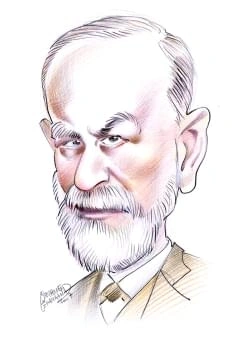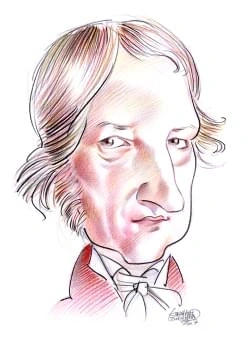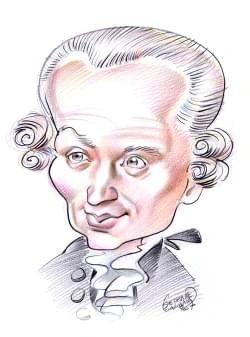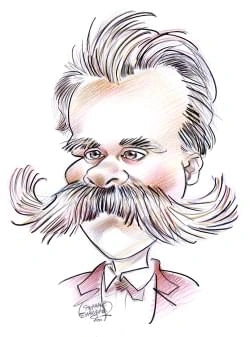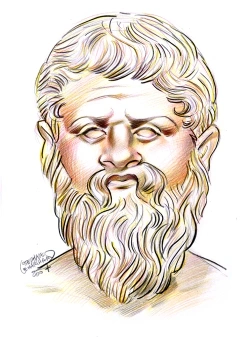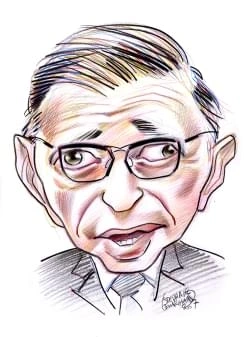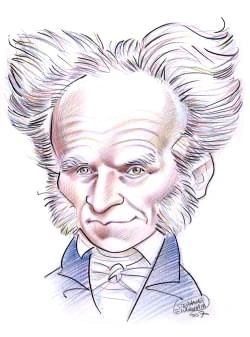828 résultats pour "century"
-
Los Angeles - geography.
(2006 population, 472,494), located east of the Port of Los Angeles. The city of Compton (95,701) is located north of Long Beach, on the east side of the AlamedaCorridor. On the other side of the corridor are the cities of Torrance (142,350) and Inglewood (114,914). Northwest of Inglewood and west of downtown Los Angeles are the wealthy and fashionable Santa Monica (88,050) and Beverly Hills (34,979). Both cities are enclaves:Santa Monica is surrounded by the City of Los Angeles to the north, ea...
-
Vietnam - country.
E Natural Resources Vietnam’s most valuable natural resource is its land, particularly the fertile, alluvial soils in the Red and Mekong deltas. Some 29 percent of the land is currently beingcultivated. Vietnam has some valuable mineral resources, including gold, iron, tin, zinc, phosphate, chromite, apatite, and anthracite coal. Most deposits are located in the northernpart of the country. Few attempts were made to extract these minerals until the French takeover of Vietnam at the end of the 1...
-
Crusades.
modern Lebanon; the Principality of Antioch, in modern Syria; and the County of Edessa, in modern northern Syria and southern Turkey. IV CRUSADES OF THE 12TH CENTURY The Crusades of the 12th century, through the end of the Third Crusade in 1192, illustrate the tensions and problems that plagued the enterprise as a whole. For thelords of Outremer a compromise with the residents and Muslim powers made sense; they could not live in constant warfare. And yet as European transplants theydepended on...
-
Crusades .
modern Lebanon; the Principality of Antioch, in modern Syria; and the County of Edessa, in modern northern Syria and southern Turkey. IV CRUSADES OF THE 12TH CENTURY The Crusades of the 12th century, through the end of the Third Crusade in 1192, illustrate the tensions and problems that plagued the enterprise as a whole. For thelords of Outremer a compromise with the residents and Muslim powers made sense; they could not live in constant warfare. And yet as European transplants theydepended on...
-
Communism.
In Britain, Robert Owen, a philanthropic Welsh manufacturer, strove against the social problems brought about by the Industrial Revolution and sought to improve thewelfare of workers. As manager of a cotton mill, he enhanced the environment of his workers by improving their housing, modernizing mill equipment for greater safetyand sanitation, and establishing low-priced stores for the workers and schools for their children. Owen believed that workers, rather than governments, should createthe in...
-
Communism .
In Britain, Robert Owen, a philanthropic Welsh manufacturer, strove against the social problems brought about by the Industrial Revolution and sought to improve thewelfare of workers. As manager of a cotton mill, he enhanced the environment of his workers by improving their housing, modernizing mill equipment for greater safetyand sanitation, and establishing low-priced stores for the workers and schools for their children. Owen believed that workers, rather than governments, should createthe in...
-
Detroit - geography.
of German and Irish immigrants. In the first half of the 20th century, the percentage of foreign-born residents declined, even though many immigrants arrived fromeastern Europe. During World War II (1939-1945), both whites and blacks were attracted from the South to work in the city’s defense industries. In 1950 foreign-bornand black residents each made up about 16 percent of the total population. In the five decades after 1950, the city lost almost half of its population, as many white resident...
-
Croatia - country.
III PEOPLE OF CROATIA The total population of Croatia at the time of the 1991 census was 4,784,265; a 2008 estimate was 4,491,543. During and after the war ethnic Serbs fled Croatia whileethnic Croats moved in. Croatia’s population growth rate in 2008 was -0.04 percent, despite population gains due to immigration. Croatia’s natural population growthrate, which measures births and deaths, has been negative since 1998. Life expectancy at birth was 75 years in 2008. The population density in 2008...
-
-
Angola (country) - country.
Portugal in 1975, it had approximately 400,000 Portuguese settlers. The vast majority of the Portuguese community has since departed for Portugal. A Population Characteristics The 2008 estimated population of Angola, including Cabinda, was 12,531,357. The population distribution, however, was uneven, with about 70 percent of thepopulation concentrated in the north and along the coast. The rate of population increase was 2.1 percent annually in 2008. The population is overwhelmingly rural; only3...
-
Smithsonian Institution.
F Arthur M. Sackler Gallery The Arthur M. Sackler Gallery houses a permanent collection of art from China, South and Southeast Asia, ancient and Islamic Iran, and Japan. Changing exhibitions ofAsian art are drawn from collections in the United States and abroad. The core of the collection was a gift from American research physician and medical publisherArthur M. Sackler. G Cooper-Hewitt, National Design Museum The Cooper-Hewitt is located in New York City and features examples of historical an...
-
Population.
year AD 1, and it took more than 1,500 years to reach the 500 million mark. Growth was not steady but was marked by oscillations dictated by climate, food supply, disease, and war. Starting in the 17th century, great advances in scientific knowledge, agriculture, industry, medicine, and social organization made possible rapid acceleration inpopulation growth. Machines gradually replaced human and animal labor. People slowly acquired the knowledge and means to control disease. By 1900 the worldp...
-
Jerusalem - geography.
There are many other artifacts in the city, tied to various periods of history; those of Canaanite, Israelite, Greek, Roman, Arab, Crusader, and Ottoman origin areamong the more prominent. Modern attractions include the Israel Museum (completed in 1965), which houses the Shrine of the Book, where the Dead Sea Scrolls areexhibited; the Rockefeller Museum (opened in 1938), which contains archaeological finds; the Yad Vashem Holocaust Museum; the Museum of Biblical Archaeology; theMuseum of Islamic...
-
Jazz
I
INTRODUCTION
Joshua Redman
Saxophonist Joshua Redman, a graduate of Harvard University, became a fast-rising star in jazz in the 1990s.
performed a highly produced, jazz-inspired form of blues that was popular in traveling minstrel shows and vaudeville. Thisexample is from the song “St. Louis Blues,” written by American composer and trumpet player W. C. Handy in 1914 andrecorded by Smith in 1925."St. Louis Blues" performed by Bessie Smith, from The Riverside History of Classic Jazz (Cat.# Riverside RB-005) Riverside Records under master license to Fantasy, Inc. All rightsreserved./Frank DriggsCollection/Archive Photos Jazz is ro...
-
The Scarlett letter
The Scarlet Letter is an american romantic novel of fiction, written by Nathaniel Hawthorne, published in the mid-nineteenth century. It is considered to be his best work. Nathaniel Hawthorne was an American novelist and short story writer from the nineteen century. He is a dark romantic (anti-transcendentalist) which means that he explores the psychological effects of guilt and sin, madness, derangement in the human psyche. The Scarlett letter is marked by this exploration. The st...
-
Aksum - history.
IV RELIGION Little is known about Aksumite religion before the conversion of King Ezana to Christianity. The names of some of the gods who were worshipped have survived. The chiefgod was Astar, associated with the Greek god Zeus. Mahrem was a war god, like the Greek god Ares, and a patron of the royal family. It is not known how the gods wereworshipped, though the remains of a number of religious buildings still exist. The largest such structure still standing is in Yeha. In these buildings, ar...
-
Qur'an.
man who profoundly influenced the history of the world. See Spread of Islam. Muhammad’s home, the Arab city of Mecca, was a major religious center and site of the revered sanctuary and shrine, the Kaaba. According to legend, the ancientreligious patriarch of the Hebrew Bible, Abraham, and his son, Ishmael, built the shrine using foundations laid by the first human being and father of humankind, Adam.During Muhammad’s years there, from about AD 570 to 622, Mecca was also an environment of spir...
-
-
Houston - geography.
Prominent historical and cultural institutions include the Civic Center Complex, located in the central business district. The complex is composed of the George R. BrownConvention Center; the Wortham Center, which is the home of the Houston Grand Opera and the Houston Ballet; and the Jesse H. Jones Hall for Performing Arts, whichis the home of the Houston Symphony. The nearby Alley Theatre houses a professional repertory acting company. Among other local professional performance groupsare the Ma...
-
Dentistry.
Together with dentists, dental hygienists and dental assistants make up the team that provides dental care to patients. Hygienists record patient medical histories, suchas blood pressure and pulse. They clean teeth, apply sealants and fluoride treatments, teach patients sound oral hygiene practices, and often assist with X rays. Manyhygienists receive a two-year associate degree, while others may choose to enroll in a four-year program at a university or in a master’s degree program. There are25...
-
Moscow (city, Russia) - geography.
V RECREATION About 30 percent of Moscow’s territory is occupied by parks and public gardens, which were important elements of Soviet city planning. Gorky Park, which providesactivities such as amusement rides and boating, sits on the right bank of the Moscow River; the park’s display of a retired Soviet space shuttle dominates the riverside.The Moscow Zoo is located just west of the city center. The Botanical Gardens, administered by the Russian Academy of Sciences, offers a diverse display of...
-
Lithuania - country.
pollution. III PEOPLE Ethnic Lithuanians constitute about 80 percent of the country’s population. The proportion of Lithuanians increased slightly in the first years after the dissolution of theSoviet Union—many Lithuanians returned to their homeland from that country and abroad while some Russians, Ukrainians, and Belarusians left the country. Russiansand Poles constitute the country’s largest minority groups, each accounting for roughly 7 percent of the population. Jews were the largest mino...
-
Physiology.
III RECENT ADVANCES Among the most important advances of the 20th century are the discovery of new hormones; recognition of the role of vitamins; discovery of blood types; developmentof the electrocardiograph and electroencephalograph, to record the activity of the heart and brain; discovery of the cause and cure of pernicious anemia by GeorgeRichards Minot, William Parry Murphy, and George Hoyt Whipple, all American physicians; and greater understanding of metabolism, the role of enzymes, and...
-
Slavery in Africa - history.
Arab Slave TradersThis 19th-century engraving depicts an Arab slave trading caravan transporting black African slaves across the Sahara. The trans-Saharan slave trade developed in the 7th and 8th centuries, as Muslim Arabs conquered most of North Africa. The trade grewsignificantly from the 10th to the 15th century and peaked in the mid-19th century.Archive Photos The spread of Islam from Arabia into Africa after the religion’s founding in the 7th century AD affected the practice of slavery and...
-
George Frideric Handel.
Handel’s most important contribution to music history undoubtedly lies in his oratorios. Although the genre had existed in the 17th century, Handel seems to haveinvented the special type known as English oratorio, with its dazzling choruses. His influence on later generations can be seen most clearly in the history of the oratorio:Handel’s Messiah is one of only a few 18th-century works to remain in the performance repertory from its composer’s lifetime until today. The oratorios of later comp...
-
Slavery in Africa.
The spread of Islam from Arabia into Africa after the religion’s founding in the 7th century AD affected the practice of slavery and slave trading in West, Central, and East Africa. Arabs had practiced slave raiding and trading in Arabia for centuries prior to the founding of Islam, and slavery became a component of Islamic traditions.Both the Qur'an (Koran) (the sacred scripture of Islam) and Islamic religious law served to codify and justify the existence of slavery. As Muslim Arabs conquered...
-
-
Calligraphy
I
INTRODUCTION
Japanese Calligraphy
This hanging scroll is an example of Japanese calligraphy.
Section of the Egyptian Book of the DeadThe Egyptian Book of the Dead was a text containing prayers, spells, and hymns, the knowledge of which was to be usedby the dead to guide and protect the soul on the hazardous journey through the afterlife. This section of one such book,dating from the early 19th Dynasty, shows the final judgment of the deceased (in this case Hu-Nefer, the royal scribe)before Osiris, the god of the dead. Hieroglyphs as well as illustrations portray the ritual of weighing t...
-
Pottery
I
INTRODUCTION
Pottery, clay that is chemically altered and permanently hardened by firing in a kiln.
basket, or a clay or plaster form. Liquid clay can be poured into plaster molds. A pot can be coil built: Clay is rolled between the palms of the hands and extended intolong coils, a coil is formed into a ring, and the pot is built up by superimposing rings. Also, a ball of clay can be pinched into the desired shape. The most sophisticatedpottery-making technique is wheel throwing. The potter's wheel, invented in the 4th millennium BC, is a flat disk that revolves horizontally on a pivot. Both...
-
Poetry
I
INTRODUCTION
Phyllis McGinley
American poet and author Phyllis McGinley composed light, witty verse, much of which deals with family life.
repetition of certain lines and the rhyming of certain lines. The Provençal sestina features a set of six words that end lines (end-words), repeated in a dizzyingly complexpattern. The range of effects created by the poetic line varies tremendously depending on its length, its patterns of repetition, and whether the sentence stops at the end of theline (end-stopped) or carries over the end of the line (enjambed). Many of the earliest examples of Old English poetry feature an accentual line with...
-
Gothic Art and Architecture
I
INTRODUCTION
Notre Dame Cathedral, Paris
Notre Dame Cathedral, in Paris, was begun in 1163 and completed for the most part in 1250.
and by external arches, called flying buttresses. Consequently, the thick walls of Romanesque architecture could be largely replaced by thinner walls with glass windows,and the interiors could reach unprecedented heights. A revolution in building techniques thus occurred. With the Gothic vault, a ground plan could take on a variety of shapes. The general plan of the cathedrals, however, consisting of a long three-aisled nave interceptedby a transept and followed by a shorter choir and sanctuary,...
-
Chinese Literature
I
INTRODUCTION
Chinese Literature, writings of the Chinese people, with a continuous history of more than 3,000 years.
(Huang) River basin region in the north. The verses are in lines of four characters (or syllables) and use rhyme and alliteration (repetition of the initial letter). Confuciusquoted them in his works. Because he described them as “without depraved thoughts,” all the verses in the Shi jing have been treated as moral allegories. (4) The Li ji (Book of Ritual ) contains detailed discussions of the principles of conduct at court and in private ceremonies. Although the Han dynasty and later ruler...
-
Chinese Literature
I
INTRODUCTION
Chinese Literature, writings of the Chinese people, with a continuous history of more than 3,000 years.
(Huang) River basin region in the north. The verses are in lines of four characters (or syllables) and use rhyme and alliteration (repetition of the initial letter). Confuciusquoted them in his works. Because he described them as “without depraved thoughts,” all the verses in the Shi jing have been treated as moral allegories. (4) The Li ji (Book of Ritual ) contains detailed discussions of the principles of conduct at court and in private ceremonies. Although the Han dynasty and later ruler...
-
Middle East - geography.
years.Spectrum Colour Library Apart from the Nile River, which provides much of the water supply and irrigation systems of Egypt, and the Tigris and Euphrates rivers, which supply Iraq, Syria, andTurkey, there are no major rivers or navigable waterways. The Sea of Galilee (Lake Tiberias) in northern Israel, fed from the north by the shallow, unnavigable JordanRiver, provides Israel’s main source of fresh water. With such a limited water supply, access to water for drinking, irrigation, and hydro...
-
Byzantine Art and Architecture
I
INTRODUCTION
Archangel Michael
This depiction of the archangel Michael, in Saint Mark's Cathedral in Venice, Italy, is an example of ancient enamel art.
This Byzantine ivory relief shows Christ the Pantocrator, or ruler of the world, raising his hand in a gesture of blessing. Itcomes from the cover of a lectionary, or book containing portions of the scriptures, and dates from the second golden ageof Byzantine art, the late 10th century. The relief is in the Fitzwilliam Museum, Cambridge, England.Bridgeman Art Library, London/New York Mosaics were the favored medium for the interior adornment of Byzantine churches. The small cubes, or tesserae, t...
-
-
Roman Catholic Church.
comprehensiveness of its doctrinal tradition. Locating its beginnings in the earliest Christian communities and refusing to acknowledge any decisive break in its history,the Roman Catholic Church considers itself heir to the theological traditions of the apostolic, patristic, medieval, and modern periods. The church does not in principleexclude any theological method, and since the encyclical of Pope Pius XII Divino Afflante Spiritu (1943) it has officially sanctioned modern principles of exeg...
-
Ballet
I
INTRODUCTION
Tchaikovsky's The Nutcracker
The Nutcracker is a classic ballet with music by Peter Ilyich Tchaikovsky.
Joffrey Ballet SchoolTraining for classical ballet dancers must begin when the students are very young. Here, teacher Dorothy Lister workswith her pre-ballet class of six-year-olds at the Joffrey Ballet School. These students are learning the five basic positions ofclassical ballet.Susan Kunklin/Photo Researchers, Inc. Different systems of ballet training have evolved, named after countries (Russia, France) or teachers (Italian dancer Enrico Cecchetti, Danish choreographer AugustBournonville). T...
-
Feudalism
I
INTRODUCTION
Feudalism, contractual system of political and military relationships existing among members of the nobility in Western Europe during the High Middle Ages.
lord”; thus, it was not rebellion for a subvassal to fight against his lord’s lord. In England, however, William the Conqueror and his successors required their vassals’vassals to take oaths of fealty to them. B Duties of a Vassal Military service in the field was basic to feudalism, but it was far from all that the vassal owed to his lord. When the lord had a castle, he might require his vassals togarrison it, a service called castle-guard. The lord also expected his vassals to attend his cour...
-
Republic (government).
South African Republic (1852) and the Orange Free State (1854), were finally annexed by Britain after the Boer War (1899-1902). Both in the United States and otherrepublics, however, the passage of the century was generally marked by democratization of the electoral process through the enlargement of the electorate. Two waves of new-state formations occurred in the 20th century—the first one after World War I, the second after World War II. Most of the newly independent statesestablished themsel...
-
Latin American Music
I
INTRODUCTION
Tito Puente Playing the Drums
Since the 1950s American drummer Tito Puente has popularized Latin American music, especially the mambo, in the
United States.
Panpipe Music of BoliviaWell before the Spanish conquest, native peoples such as the Quechua and Aymara living in the Andes Mountains inBolivia, Peru, and Ecuador, developed a rich musical tradition. Panpipes (set of tuned pipes), made of ceramic, sugarcane,or bone were paired with shell trumpets, cane flutes, and drums, which accompanied dancers during religious and secularceremonies. Large ensembles of 4 to 20 panpipe players are still the norm, and Spanish influences have since beenintegrated...
-
George Frideric Handel
I
INTRODUCTION
Handel's Water Music
In addition to his popular operas and oratorios, German-born composer George Frideric Handel wrote music in the 1700s
for the church and for royal celebrations.
During the 1720s and 1730s Handel worked primarily as a composer and producer of operas for the London stage. This extremely productive phase of his career beganwith the opening of the Royal Academy of Music in London in 1719. The Royal Academy was founded with the support of the king and aristocratic subscribers for theproduction of Italian operas. Its directors sent Handel to continental Europe to hire some of the world’s greatest singers. Handel was not the only composer writingoperas for Aca...
-
Europe .
D Vegetation Although much of Europe, particularly the west, was originally covered by forest, the vegetation has been transformed by human habitation and the clearing of land.Only in the most northerly mountains and in parts of north central European Russia has the forest cover been relatively unaffected by human activity. On the otherhand, a considerable amount of Europe is covered by woodland that has been planted or has reoccupied cleared lands. The largest vegetation zone in Europe, cuttin...
-
Europe - Geography.
D Vegetation Although much of Europe, particularly the west, was originally covered by forest, the vegetation has been transformed by human habitation and the clearing of land.Only in the most northerly mountains and in parts of north central European Russia has the forest cover been relatively unaffected by human activity. On the otherhand, a considerable amount of Europe is covered by woodland that has been planted or has reoccupied cleared lands. The largest vegetation zone in Europe, cuttin...
-
-
Spanish Empire.
Spain’s royal government quickly imposed its own officials, first to collect taxes and then to administer the colony. Its goal was to assert royal control over both settlersand indigenous peoples. In Spain the government established a House of Trade to supervise colonial affairs and to oversee, license, and tax all trade and commerce. Asthe royal government asserted more authority over colonial activities, Columbus lost effective power, and was eventually replaced by other colonial governors. Wi...
-
Spanish Empire .
Spain’s royal government quickly imposed its own officials, first to collect taxes and then to administer the colony. Its goal was to assert royal control over both settlersand indigenous peoples. In Spain the government established a House of Trade to supervise colonial affairs and to oversee, license, and tax all trade and commerce. Asthe royal government asserted more authority over colonial activities, Columbus lost effective power, and was eventually replaced by other colonial governors. Wi...
-
Mesoamerica.
for cooking. In other regions, the earliest ceramics are more sophisticated technically and aesthetically. At around 1800 BC in the Pacific coastal region of Soconusco (in what is now southeastern Chiapas State, Mexico), the earliest pottery was very complex both in forms and decoration. It seems to have had a social function and beenused primarily for ritual feasting. III MAJOR CIVILIZATIONS Over a period of 3000 years, beginning in about 1500 BC, a number of important cultures emerged in M...
-
Azerbaijan - country.
second most important industrial center after Baku. A Ethnic Groups Azerbaijan, including the autonomous exclave of Naxçivan, is populated mostly by ethnic Azerbaijanis, who are also known as Azeris. The ethnic composition of thecountry changed due to a civil war between the government of Azerbaijan and Armenian secessionists in the Nagorno-Karabakh enclave. Beginning in 1988, when thepeople of Nagorno-Karabakh unilaterally decided to secede from Azerbaijan, nearly the entire Azerbaijani popula...
-
Hinduism.
they do not share any basic terms. B Sanātana Dharma Evidence from inscriptions indicates that Hindus had begun to use the word dharma for their religion by the 7th century. After other religions of Indian origin also began to use this term, Hindus then adopted the expression san ātana dharma to distinguish their dharma from others. The word san ātana, meaning immemorial as well as eternal, emphasized the unbroken continuity of the Hindu tradition in contrast to the other dharmas . The Bu...
-
Tuberculosis.
TB has existed for thousands of years. Scars on a skull found in Turkey indicate the presence of the disease 500,000 years ago. Scientists also have found tubercles inmummified bodies from ancient Egypt. References to TB can be found in the writings of ancient Babylonia, Egypt, and China. The term tuberculosis was first used in 1839; it was derived from the Latin word tubercula, meaning small lump, referring to the small scars seen in tissues of infected individuals. TB reappeared in Europe...
-
Warsaw - geography.
VI ECONOMY In addition to serving as Poland's leading administrative center, Warsaw is also a center for science, research, and higher education. Since World War II the city'sindustrial base has been developed, with diverse plants producing steel, cars, tractors, and consumer electronics. Warsaw is the second most important industrial regionin Poland (after Katowice in the south). Warsaw, more than anywhere else in the country, has benefited from the boom in construction and commerce that foll...
-
Judaism.
is learned or memorized”), the earliest document of rabbinic literature, edited in Palestine at the turn of the 3rd century. Subsequent rabbinic study of the Mishnah inPalestine and Babylonia generated two Talmuds (“that which is studied”; also called Gemera, an Aramaic term with the same meaning; see Talmud), wide-ranging commentaries on the Mishnah. The Babylonian Talmud, edited about the 6th century, became the foundation document of rabbinic Judaism. Early rabbinic writings also include exe...
-
-
Federal Republic of Germany - country.
B Rivers and Lakes Rivers have played a major role in Germany’s economic development. The Rhine River flows in a northwesterly direction from Switzerland through much of westernGermany and The Netherlands into the North Sea. It is a major European waterway and a pillar of commerce and trade. Its primary German tributaries include theMain, Mosel, Neckar, and Ruhr rivers. The Oder (Odra) River, along the border between Poland and Germany, runs northward and empties into the Baltic; it provides an...
-
British Empire .
B1 The Seven Years’ War During the Seven Years’ War in Europe (1756-1763), Britain made large imperial gains at the expense of France. The North American segment of the Seven Years’ Warwas known as the French and Indian War. It was launched by the British against French possessions in North America in 1754, and in 1758 the British captured theFrench fortress of Louisbourg, which gave them access to French territory in the St. Lawrence Valley. In the following year Québec was captured, marking t...
}})
